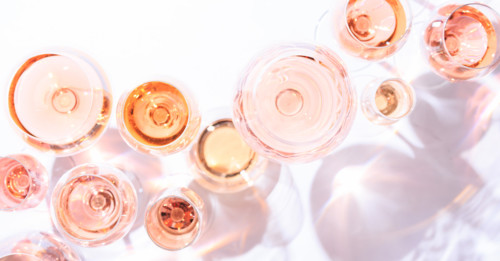Rosé has exploded on the US market over the past few years, especially during the warm months of the year. In France, it now eclipses the sale of white wine and, rumor has it, Sting slugs bottles of the stuff during his live performances. It also happens to be the perfect wine for sipping in the park or at a backyard barbecue. Suffice it to say, rosé has become incredibly popular, but most of us don’t know how rosé is made or where some of the most consistent rosés comes from.
Looking for a bottle to drink? Check out our regularly updated list of the best Rosé wines!
Unlike white grapes that become white wine, and red grapes that become red wine, pink grapes don’t exist in nature; so, how do winemakers create a style of wine that always has such a beautiful pink color?
The answer here is skin contact. As we have discussed in other wine 101 posts, when all grapes, no matter their color, are juiced, the juice that runs out of the fruit is clear. Wines receive their color not from the juice but from the juice’s contact with the skin of the grapes. As the skins and the juice soak together the color from the skin bleeds into the juice, giving the wine its yellow or red color. This process is known as maceration.
Winemakers create a rosé wine by juicing red grapes and then allowing the juice to soak with the skins for a very short period, usually only two to three days. As soon as the juice begins to take on the beautiful pink color the winemaker desires, the skins are removed and the juice is allowed to ferment, creating delicious rosé.
A common misconception is that rosé can also be made by mixing red wine with white wine, but in fact, this process is frowned upon by the wine community.
The wine region known for creating the most consistent rosés, no matter the price point, is Provence. The Provence wine region of France creates rosé more than any other style of wine, and they’ve become incredibly good at it. Due to the size of the region, quality rosés exist at all price points, so if you’re looking for a rosé and happen to be in a store or at a restaurant that you don’t trust, a safe bet is asking for a bottle from Provence.
For tips on the correct temperature to serve rosé, click here.
